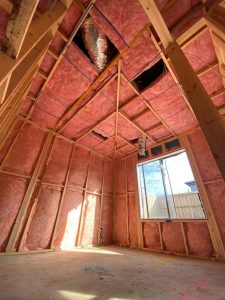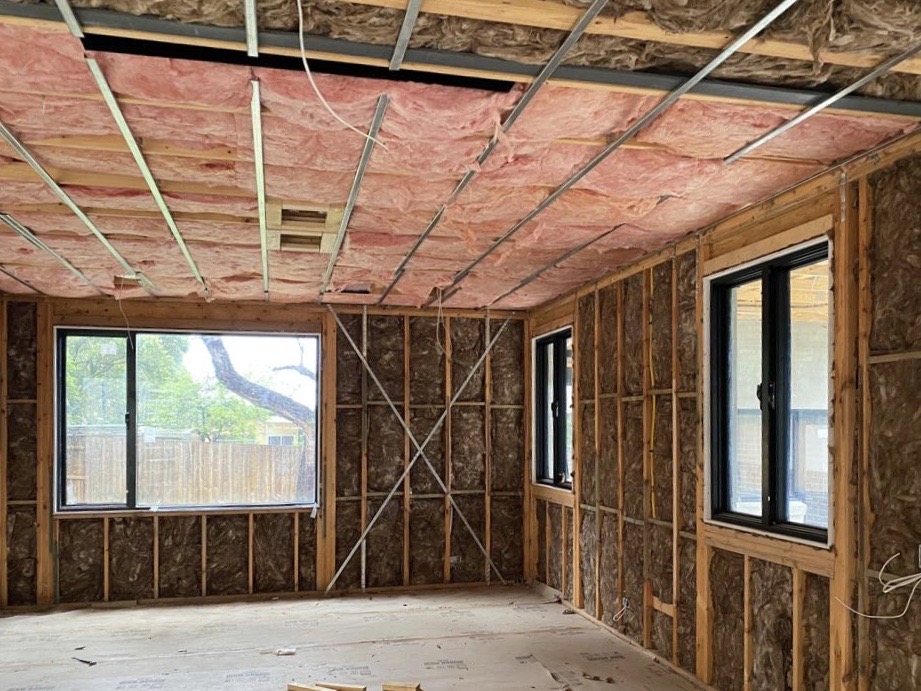What is insulation R-value?
In the context of home insulation, the thermal RESISTANCE rating, also known as the R-value is a measure of the insulation batts resistance to heat flow. The greater the R-value, the greater the resistance to heat, which in turn means a higher effectiveness of the thermal insulation.
Having a high R-value will not only keep you warmer in winter but cooler in summer. Overtime it will too provide you with monumental savings on your energy bills as indoor temperatures will be retained for much longer periods of time.
If you’re a building a new home, the minimum R-values will be included in the energy report and installing the minimum R-value will grant your house a Certificate of Compliance (COC). If you are currently in an existing home with no thermal insulation in the ceiling, installing any type of R-value will concurrently increase the amount of heat being retained in your house, significantly.
What does HD/SHD mean?
If an R-value is followed by “HD”, it means the insulation is HIGH DENSITY, creating a higher thermal resistance in each batt, further more taking up less space in the wall cavity. HD insulation also creates a great barrier against acoustic sounds from travelling from room to room. There is also a premium range of super high density (SHD) insulation batts that provide a higher thermal resistance than the already heightened HD range (which also provides a greater sound barrier). HD and SHD batts all fall under the category of acoustic ranged insulation due to the high acoustic barrier qualities they deliver.
What is an R-value insulation batt?
An insulation “batt” is generally made out of glass fibres bonded by renewable bio-based materials. The thickness of these “batts” are dictated by their given R-values, which in conjunction with their dimension properties, will provide a longer lasting warmth dependant on its R-value. A number of these “batts” come in bags ranging from 11 per pack for R6.0 ceiling insulation to 42 per pack for R1.5 wall insulation.
Difference between ceiling and wall insulation batts?
Ceiling batts are a thicker type of batt in comparison to the wall type and are more rigid as they require much thicker and longer traits in order to fit plush in large spaced ceilings. Wall insulation batts on the other hand need to be slightly compressed to fit in wall studs to ensure no gaps. They come in contrasting thicknesses and widths to ceiling batts as they are designed to suit smaller cavities in walls, not overhead ceilings. Wall batts too have an added water repellent based within the strands of material whereas ceiling batts do not.
On the contrary some wall insulation products can be used as underfloor insulation. This is because these areas share similar dimensions and R-value requirements. For example, Knauf Earthwool Sound Shield R2.0HD and R2.5HD, can be installed in both wall and underfloor areas. Shop here

Recommended R-values in Australia:
| INSULATION TYPE | MIN. R-VALUE | MAX. R-VALUE | FIND PRODUCTS |
| External Wall Insulation | R2.0 HD | R2.7 HD | Shop |
| Internal Wall Insulation | R1.5 | R2.7 HD | Shop |
| Roof Insulation (Roofing Blanket or Space Blanket) | R1.3 | R3.6 | Shop |
| Ceiling insulation batts | R3.5 (NSW/VIC/ACT/SA/TAS) | R6.0 | Shop |
No Gap Insulation Services makes choosing and installing insulation directly to your home easy as we will supply and deliver to you, no matter where you are in Victoria. With almost 3 decades of experience and a 50-year insured guarantee, you simply cannot go wrong. Click here to receive your free quote today!



